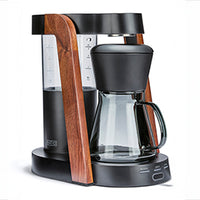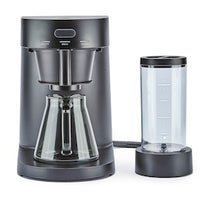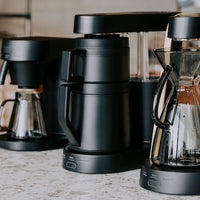You’re Not Letting Your Coffee Rest Long Enough Before Sipping
You just finished brewing. The aroma is incredible. Steam rises from the cup. And yet — that first sip tastes off. Too sharp, too hot, maybe even a little harsh.
It’s not the beans. Not the grinder. Not even the water. It’s timing.
Letting your coffee rest — even for a minute or two — before taking that first sip can dramatically improve your drinking experience. Yet most people skip this part entirely, rushing straight from brew to sip without giving the coffee a chance to settle, cool, and reveal its full profile.
Here’s what happens in those quiet moments after brewing — and why your best cup might be waiting just a little longer than you think.
Why Freshly Brewed Coffee Can Taste Off
When coffee is piping hot (over 160°F or 71°C), its flavor compounds aren’t in balance. High temperature amplifies acidity and bitterness while muting sweetness and body.
You get a rush of heat and sharp notes — but none of the nuance. Even coffees known for chocolate, caramel, or fruit notes will seem overly bright or flat if you drink them too soon.
It’s like biting into a dish before it finishes cooking — technically edible, but not what it was meant to be.
The Magic Zone: 130–150°F
As your coffee cools, the flavor balance begins to shift:
-
Sweetness rises
-
Bitterness fades
-
Aromatics become more expressive
-
Mouthfeel softens and rounds out
Most coffee professionals agree the ideal sipping range is between 130°F to 150°F (54–65°C). It’s warm enough to feel comforting, but cool enough to showcase flavor clarity and texture.
Letting your brew rest for just 3–5 minutes usually brings it into this zone — depending on mug type, room temperature, and brew size.

What Resting Does Beyond Cooling
Cooling is part of it — but resting also gives your brew time to:
-
Degas: Just like during the bloom, hot liquid coffee continues to release gas for a short while after brewing, which can impact flavor
-
Settle: Fines or sediment can settle slightly, improving clarity in some brews
-
Stabilize: As temperature evens out, flavor distribution becomes more consistent throughout the cup
In short: resting helps the cup relax. And when it does, you taste more of what the coffee truly has to offer.
How to Know When It’s Ready
If you don’t want to use a thermometer, that’s fine — your senses will guide you.
-
If it’s still steaming heavily, it’s probably above 160°F
-
If it feels too hot to sip without a cautious blow — wait
-
The moment you take a sip and can actually hold it in your mouth comfortably, you’re likely in the sweet zone
Pay attention to how your coffee evolves minute by minute. Take small sips every 30 seconds and note when it tastes best. That becomes your personal rest time.
How the Right Mug Helps
Not all mugs cool coffee at the same rate. Here’s how materials affect resting time:
-
Thin ceramic or glass: Cools quickly — rest for 2–3 minutes
-
Double-walled glass or insulated mugs: Hold heat longer — rest for 5–7 minutes
-
Thick stoneware: Slower cooling — may need a bit longer
Preheating your mug before brewing helps retain warmth without overheating your first sip.
Resting Time by Brew Method
Different brew methods create different heat and texture dynamics. Here’s a rough guide:
-
Espresso: Let it rest 30–60 seconds to settle crema and reduce sharpness
-
Pour-over: Rest 3–5 minutes for full flavor clarity
-
French press: 4–6 minutes, especially for sediment to settle
-
Auto-drip: 2–4 minutes depending on machine and mug type
Every setup has its own rhythm. Learning yours is part of brewing better.
Designed for the Full Experience
Brewers like those from Ratio Coffee focus on delivering precision at every step — from water temperature to bloom timing to brew flow. That means by the time your cup is ready, the coffee has already been set up for success.
Letting it rest before sipping honors that process. It allows all the careful timing and engineering to express itself fully in flavor — instead of being rushed past in a cloud of steam and heat.
Brewing is an act of patience. Drinking it should be, too.
Don’t Let the First Sip Steal the Show
You wouldn’t judge a song by its opening note or a movie by its first scene. The same goes for coffee.
By letting your cup rest just a bit, you give it space to evolve. To reveal layers. To show you the sweetness, the body, the balance — all the things you worked so hard to get during the brew.
Next time, pause. Let it sit. Let it cool. You’ll notice more. And once you do, it’ll be hard to go back.
Frequently Asked Questions
Why does hot coffee taste bad?
At high temperatures, acidity and bitterness overpower sweetness. Letting it cool brings out balance and complexity.
How long should I wait before sipping?
Usually 3–5 minutes, depending on your mug and brew volume. Start sipping around 150°F or once it's no longer scalding.
Does resting coffee change the caffeine?
No. Caffeine content remains the same, but perception of strength might change as flavors evolve.
Can I reheat coffee if it cools too much?
Reheating can dull the flavor or make it taste stale. If possible, drink within the warm range rather than reheating.
 Ratio Eight S2
Ratio Eight S2
 Ratio Eight Original
Ratio Eight Original
 Ratio Six
Ratio Six
 Ratio Four
Ratio Four
 Compare Machines
Compare Machines






